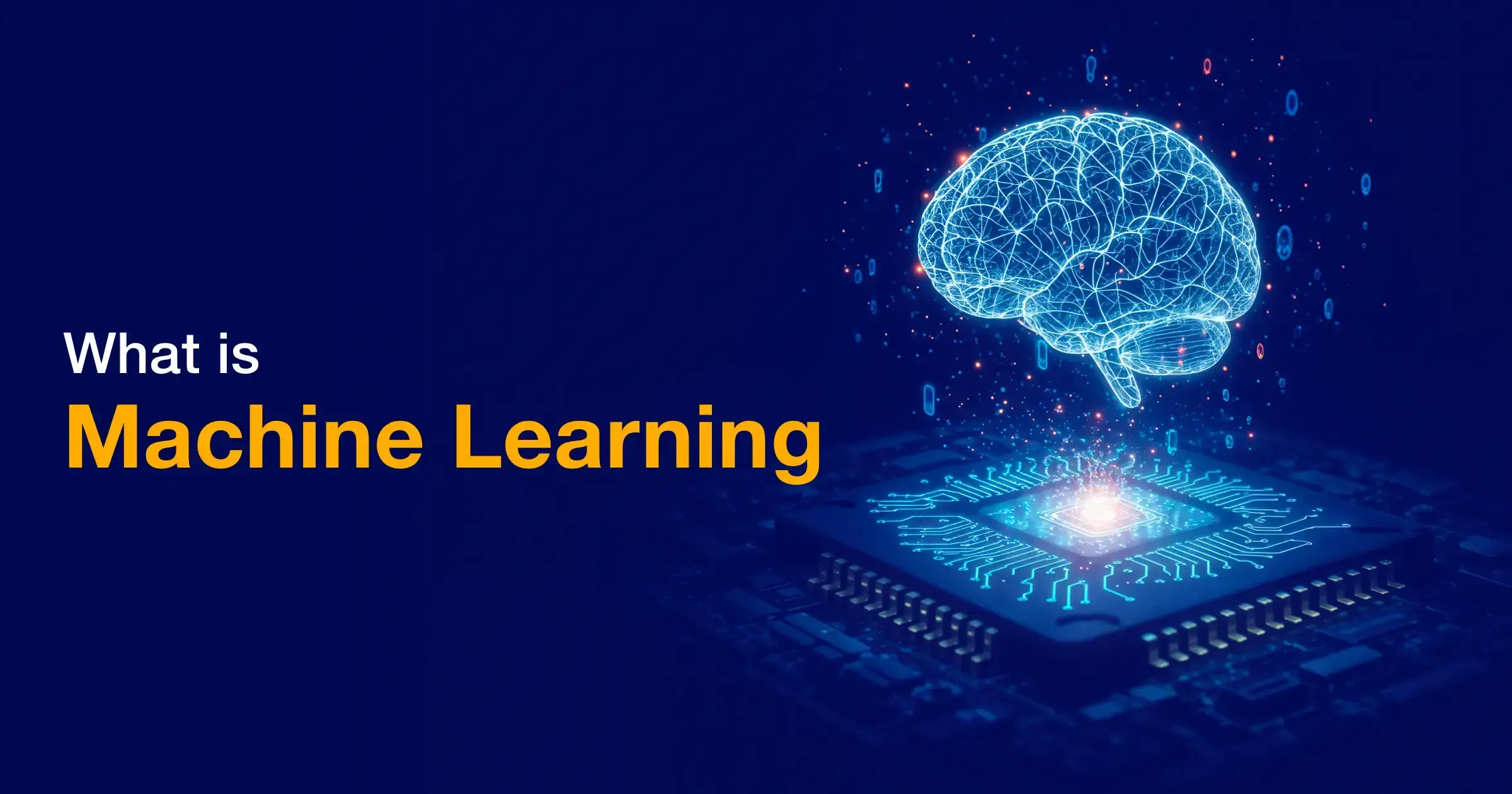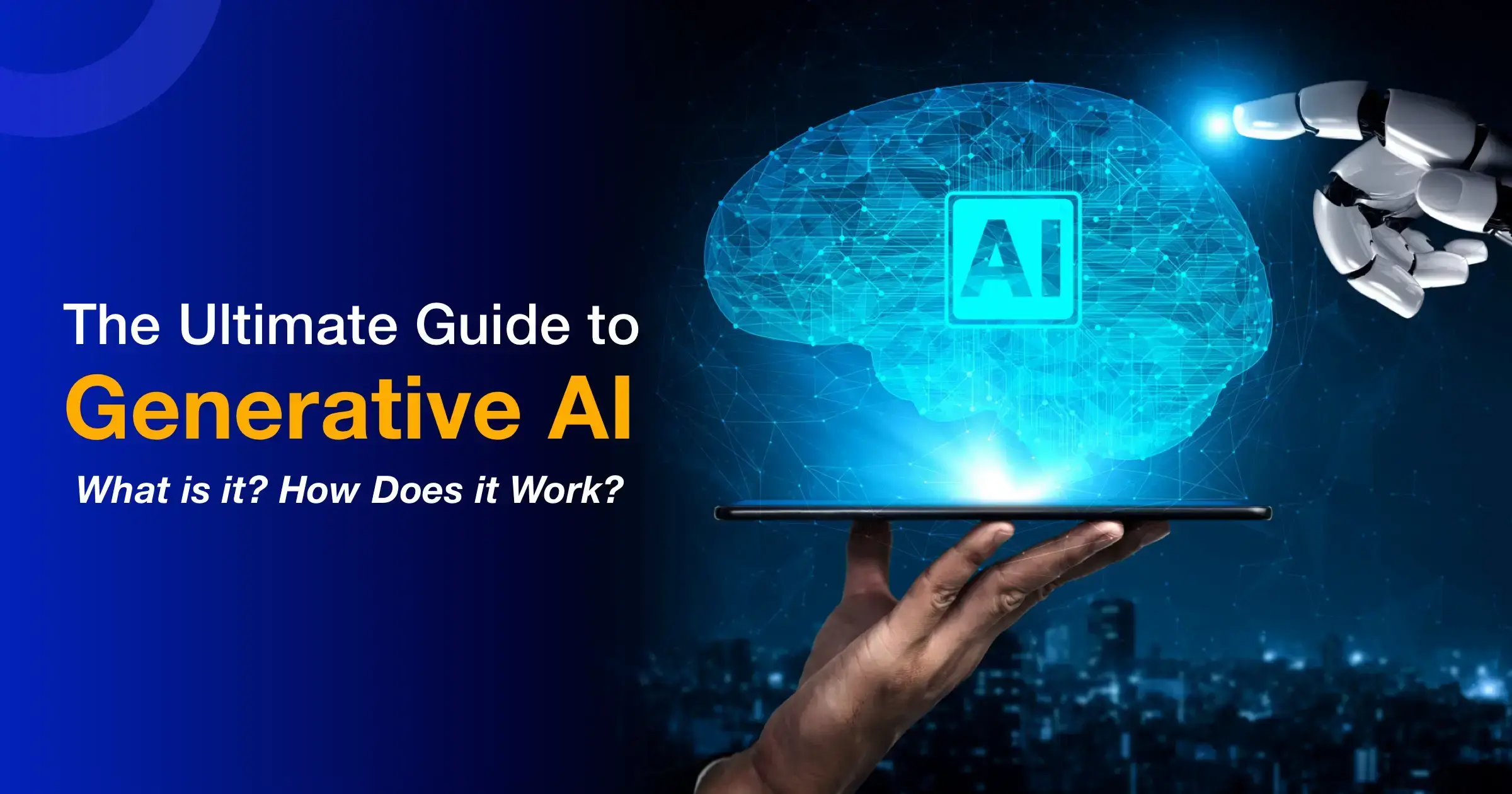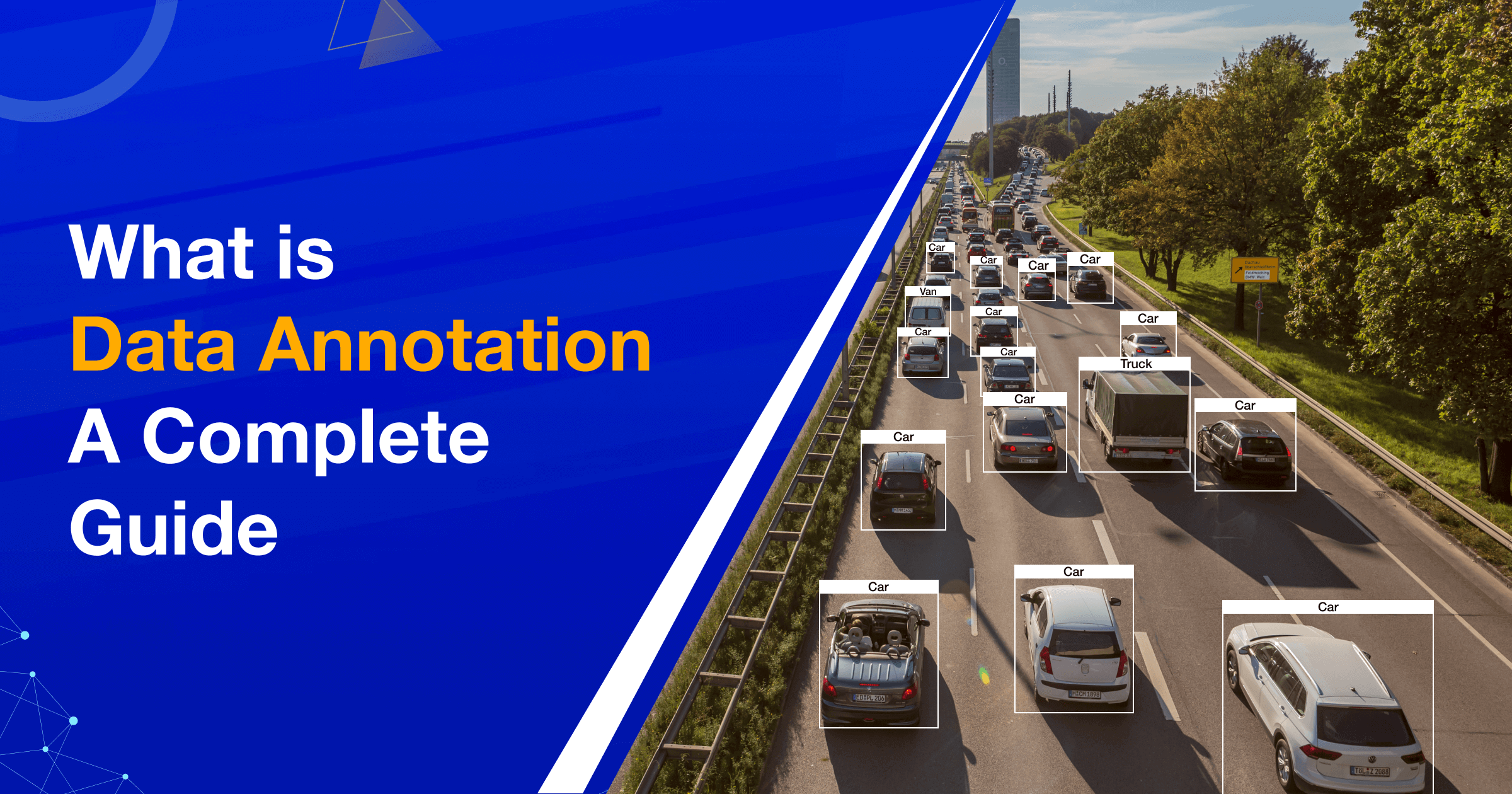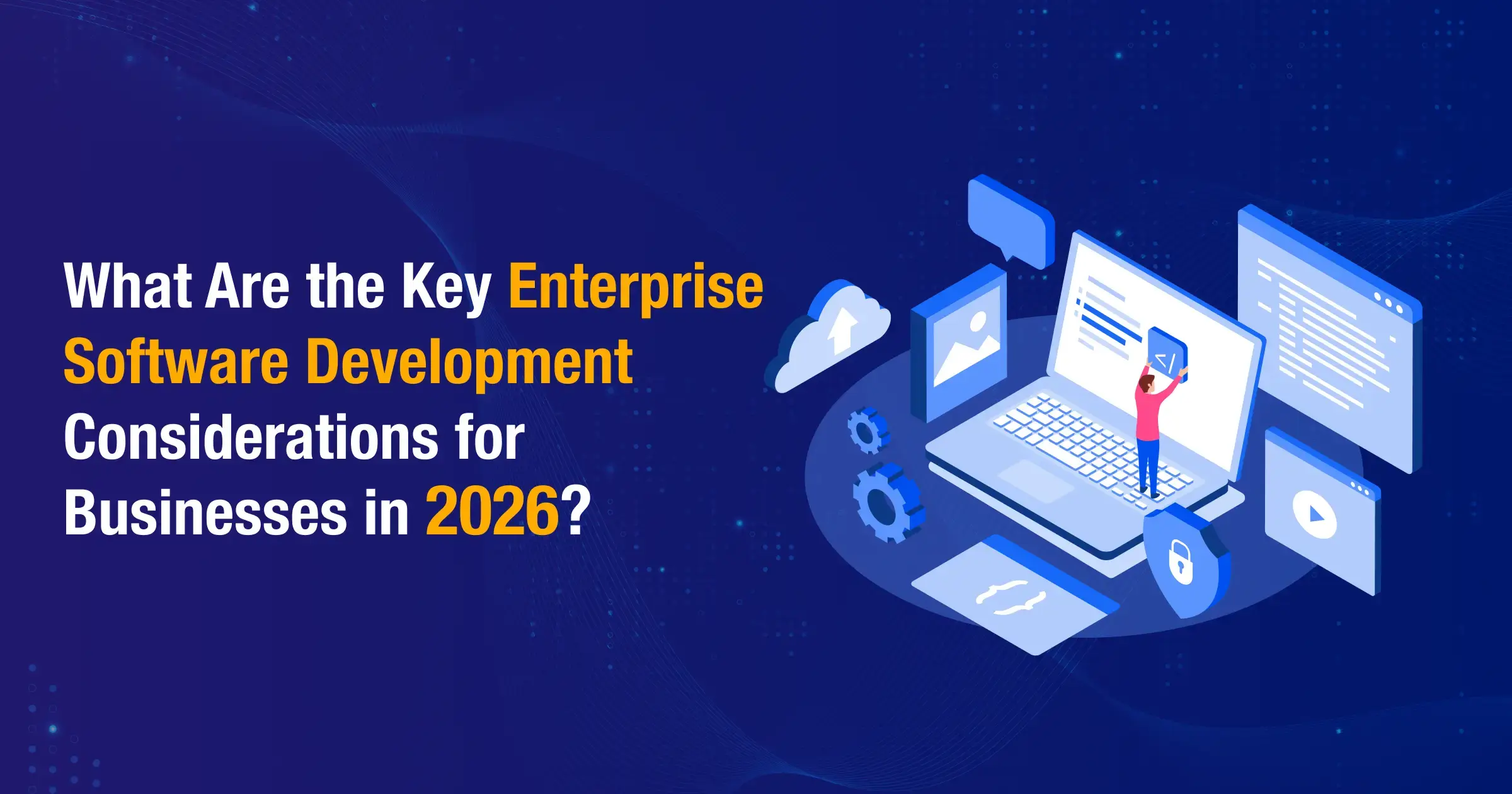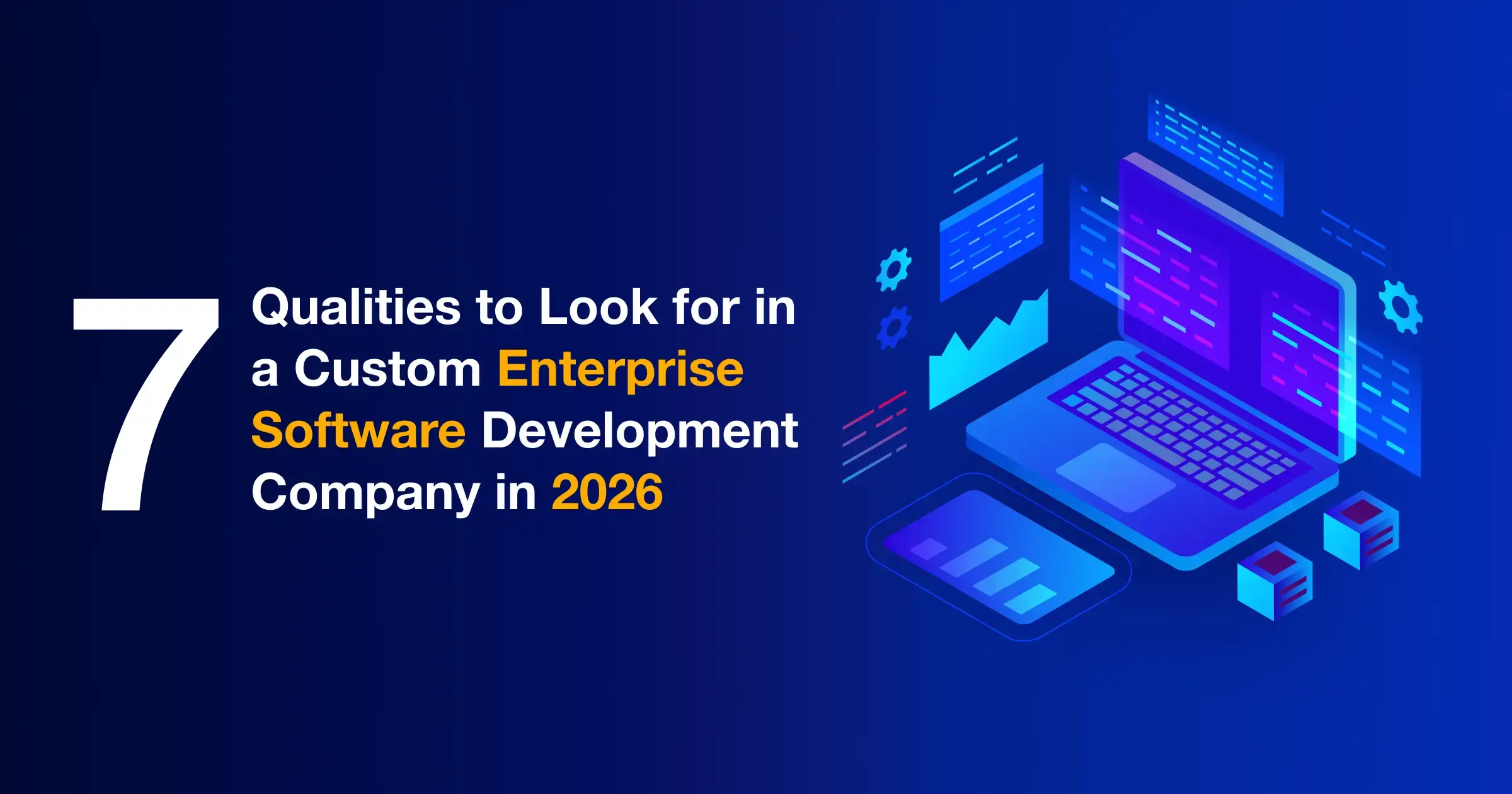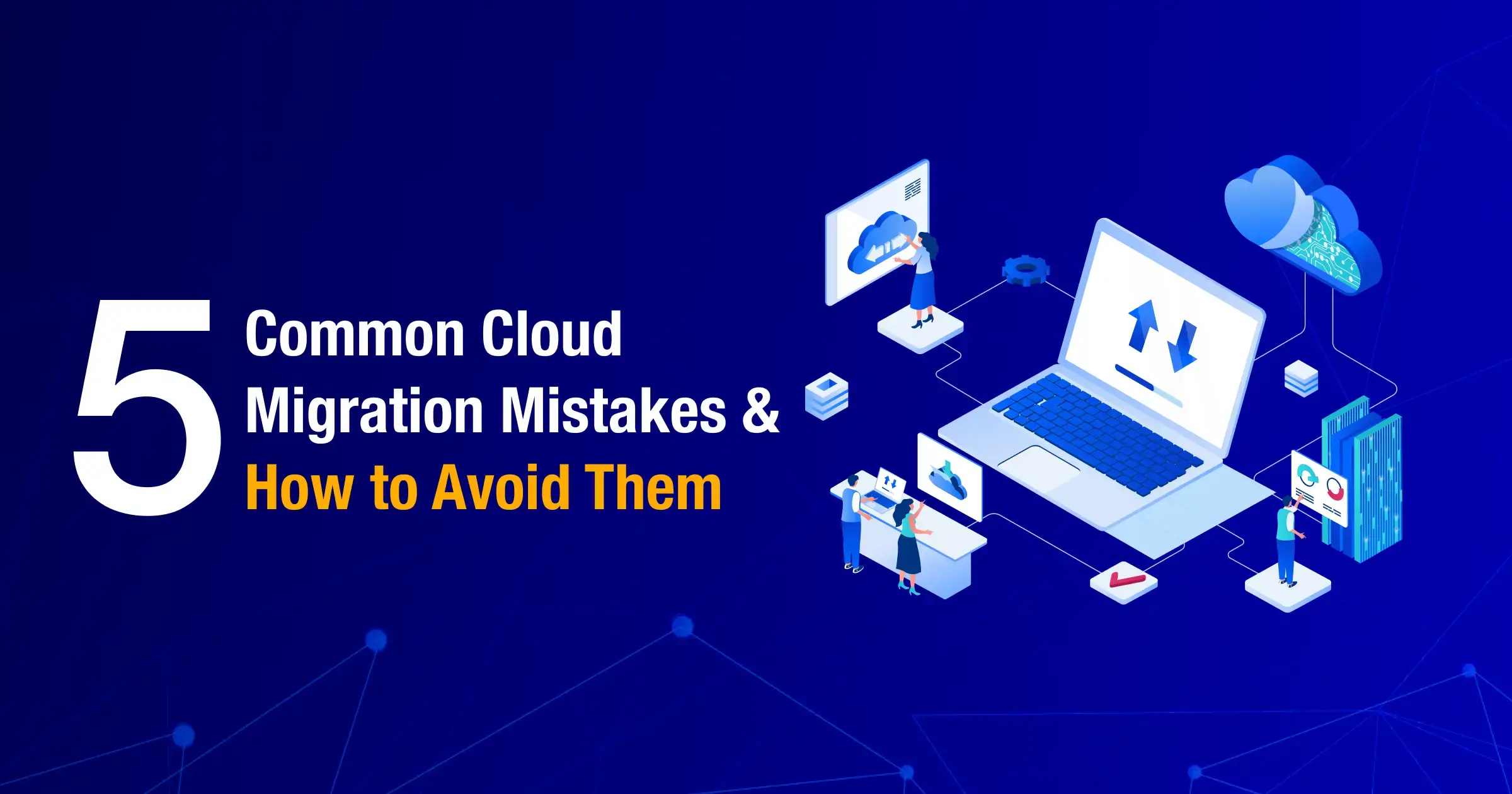
Machine learning is a subset of artificial intelligence that helps computer algorithms analyze and learn from data and help make intelligent decisions. It enables computers to look at examples, find patterns, and ultimately mimic the way humans behave.
Machine learning is a branch of artificial intelligence, allowing computers to learn from data. Instead of relying on a list of pre-written rules, it uses large sets of data to figure out patterns and make predictions. The more data you feed it, the better it gets at solving problems.
Traditional software works with fixed instructions. You tell it exactly what to do and how to react in certain situations, and it follows that script. Machine learning is different. Here, you don’t give it rules but train it with examples. Then, it learns the rules on its own.
This kind of learning happens through machine learning models. An ML model is a system that takes in data, analyzes it, gets trained with it, and gives back a prediction or result. Over time, the model keeps improving through continuous learning.
For example, an email service uses machine learning to recognize spam. It looks at thousands of past emails and learns which ones were marked as spam. Then, it uses that learning to flag new ones on its own.
In simple terms, machine learning helps computers get smarter with use. It is the reason behind why a streaming service knows what show you might like next. Or why online stores show you products that feel handpicked. Behind all of that is a system learning quietly in the background.
How Machine Learning Works
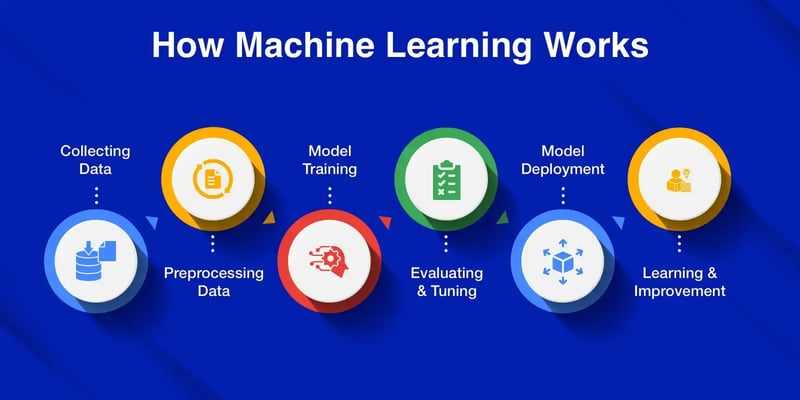
Machine learning, despite its complex development nature, is rather simple. It follows a clear process that follows step by step instructions. Each stage helps the system learn from data and make better decisions over time. Below are the main parts that make it all work.
1. Data Collection and Preprocessing
Everything in machine learning starts with data. The system learns from examples, so the quality of data really matters. But raw data is not always clean or ready to use. That’s why we first collect the right data and then clean it up. Here, unstructured data is converted into structured one, which helps machines understand it easily. This step makes sure the system is learning from the quality data.
Key features:
- Collects data from sources like databases, apps, or sensors
- Removes errors, missing values, or duplicates
- Converts data into a format the model can understand
2. Algorithms and Model Training
Once the data is ready, the system needs to learn from it. This happens through algorithms. An algorithm is a method or recipe the computer uses to find patterns within data. The result is a trained model that can make predictions or decisions.
Key features:
- Uses math and logic to spot patterns in the data
- Builds a model by learning from past examples
- Improves its knowledge as it sees more data
3. Evaluation and Tuning
After training, we test how well the model performs. We check if it is accurate and reliable. If the results are off, we tweak some settings or try a different approach. This fine-tuning helps get better results over time.
Key features:
- Tests model accuracy using new data
- Measures how well the model predicts outcomes
- Adjusts settings to improve performance
4. Deployment and Inference
Once the model works well, it is now time to use it in the real world. This step is called deployment. Inference is when the model takes new data and makes predictions in real time. Now, it's ready to help with actual business tasks.
Key features:
- Places the model into live systems (apps, websites, etc.)
- Takes real-time input and gives results quickly
- Supports business decisions automatically
5. Ongoing Learning and Improvement
Machine learning doesn't just stop after launch. Over time, it can learn from new data and improve its performance. This ongoing learning makes the system more accurate and useful.
Key features:
- Updates the model with fresh data
- Learns from mistakes and improves over time
- Keeps results aligned with changing business needs
What are the Types of Machine Learning
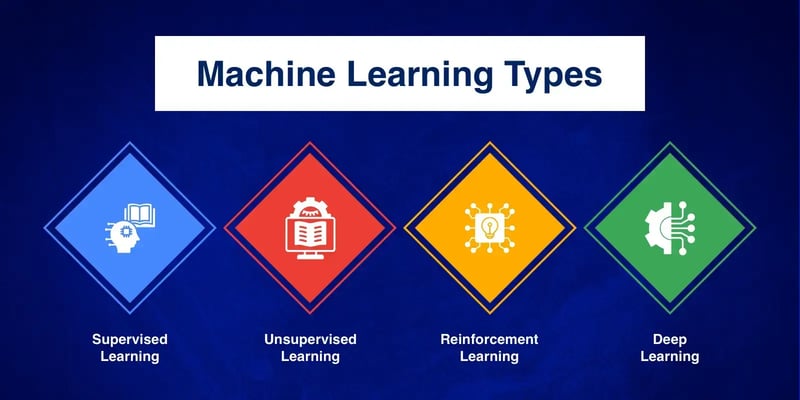
Machine learning comes in different forms. Each one learns in a slightly different way, and it purely depends on the goal and the kind of data it uses. Below are the main types you will come across, along with how they apply to real business problems.
Supervised Learning
Supervised learning is the most common type. It learns from labeled data. That means the data includes both the input and the correct output. The system uses this to figure out patterns and make future predictions. And, over time, they learn from data and perform better.
For example, a bank might use supervised learning to decide if a loan should be approved. Here, the system is trained on past applications that show who was eligible for loan and who was not. It looks at income, credit score, and other factors, then learns how to make the same kind of decision for new applications.
Unsupervised Learning
Unsupervised learning works without labeled data. Here, the ML model does not know the correct answers in advance. Instead, it tries to find hidden patterns on its own. This is useful when you want the system to group or organize data in a smart way.
A good example is customer segmentation in retail. The system looks at customer behavior, such as what they buy and how often they make a purchase. Then, it creates groups of similar customers with similar buying patterns. This helps marketing teams send the right offers to the right people.
Reinforcement Learning
Reinforcement learning is based on trial and error. The system learns by trying things and getting feedback. If it does well, it gets a reward. If it fails, it adjusts and tries again. Over time, it learns the best strategy through experience.
This type of learning is often used in areas like robotics or dynamic pricing. For example, an online travel site might use it to adjust prices based on demand and competitor actions. The system keeps learning which price leads to more bookings and higher profit.
Deep Learning
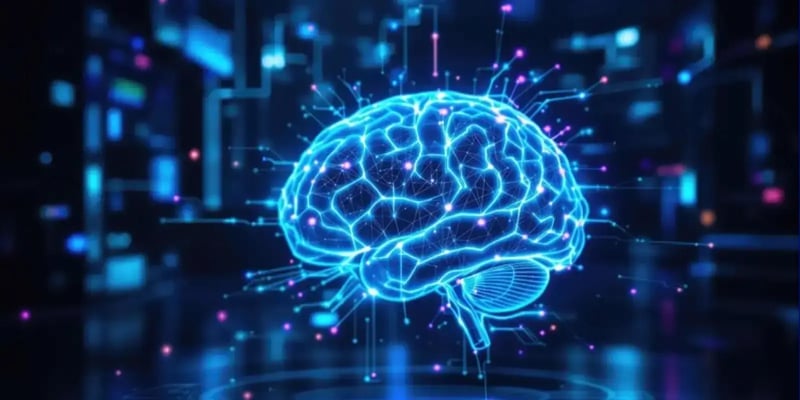
Deep learning is an advanced method of machine learning. It uses neural networks that work like a simplified version of the human brain. These networks can handle huge amounts of data and find complex patterns that other models might miss.
One common use of deep learning is facial recognition. The system looks at many examples of faces and learns the features that make each one unique. It can then identify or verify a person in real time. Another use is in chatbots that understand human language and respond in a human-like way.
How Machine Learning Transforms Businesses
With machine learning, businesses change the way they traditionally operate. It helps them make smarter decisions and serve customers better. These systems learn from data and over time, they improve. Below are some key ways machine learning creates considerable impact for businesses today.
Predictive Insights for Better Decisions
Machine learning helps businesses look ahead. In addition to reporting what happened, it shows what is likely to happen next with data. This gives leaders a chance to plan better and stay ahead of risks. For example, a sales team can use machine learning to forecast demand and prepare the right inventory. It helps shift decisions from guesswork to facts.
Key features:
- Finds patterns that humans may miss
- Forecasts outcomes based on past data
- Supports faster, data-driven decisions
Automating Repetitive Tasks
Many business tasks are repetitive. They take time and do not always need human thinking. Machine learning can take over these jobs. It can sort emails, process forms, or check invoices. It essentially makes automation a hassle-free process, especially in times when AI agents are taking the lead in transforming businesses. This saves time and reduces errors. It also frees up staff to focus on more valuable work.
Key features:
- Handles tasks with clear patterns or rules
- Speeds up routine processes
- Reduces the need for manual work
Improving Customer Personalization
People want personal experiences. Machine learning helps companies give each customer what they want. It learns from browsing habits and past purchases. Then it makes smart suggestions, like what to watch next or which product to try. This makes customers feel seen and understood.
Key features:
- Tracks and learns from customer behavior
- Suggests content or products based on interests
- Increases engagement and loyalty
Reducing Operational Inefficiencies
Business operations often have hidden gaps. Machine learning helps find and fix them. It spots delays, waste, or problems that slow things down. For example, it can look at supply chain data, which is to suggest faster shipping routes or better inventory planning. These small fixes can save a lot of time and money.
Key features:
- Finds weak spots in workflows
- Offers ways to streamline operations
- Helps cut down on costs and delays
Enabling New Business Models
Machine learning opens doors to new ways of doing business. It makes it possible to create smart products, offer services on demand, or respond in real time. For example, ride-sharing apps use machine learning to match drivers and riders instantly. Insurance companies use it to offer custom pricing based on risk profiles. These ideas were not easy to do before machine learning.
Key features:
- Supports real-time decision-making
- Powers smart and adaptive products
- Helps businesses scale faster with tech
Business Use Cases of Machine Learning Across Industries
Machine learning greatly changes the way different industries work. It helps solve everyday problems and save time. Additionally, it helps unlock new ways to grow business. Let’s look at how it’s being used across major sectors.
Retail
Machine learning in the retail industry helps companies understand what people want to buy. It studies shopping patterns, then suggests what products to stock. It also powers product recommendations, using which they can personalize the customer experience.
Many retailers use it to decide when to offer deals or discounts. With smart predictions, Machine learning helps businesses avoid overstocking and keeps their shelves filled with items customers actually want.
Finance
Machine learning plays a pivotal role in the finance industry by reducing risk and spotting fraud. It keeps an eye on transactions and alerts teams when something seems off.
Banks use it to check if someone qualifies for a loan by reviewing past data that includes credit scores and financial discipline. Additionally, ML guides investment choices by learning from market trends. All of this helps financial teams act faster and stay safer.
Healthcare
Healthcare providers use machine learning to make better decisions. It can read medical images accurately and flag early signs of problems, which comes highly helpful in preventive healthcare. It also looks at patient records and suggests treatment options based on their unique health indicators.
Its applications resonate well in R&D as well. While doctors get help choosing what works best based on the data, researchers use it to find patterns in test results. This speeds up drug discovery and improves care.
Manufacturing
Manufacturers depend on machine learning to keep things running smoothly. It can tell when a machine is likely to break, as a result, teams can fix it before it stops working. It also spots defects in products during production.
This means fewer returns and higher quality. It helps plan production schedules more effectively, which keeps things on track and cuts waste. Additionally, with the help of sensors, machines can read data and schedule maintenance breaks without hampering with the ongoing production.
Logistics
In logistics, machine learning makes things move efficiently without any hassle. For instance, ML helps drivers avoid traffic and choose better delivery routes.
Warehouses use it to speed up packing and sorting. It also looks at past delivery data to predict delays before they happen. That way, teams can plan ahead and avoid costly slowdowns.
What is the Difference Between Machine Learning and Traditional Analytics
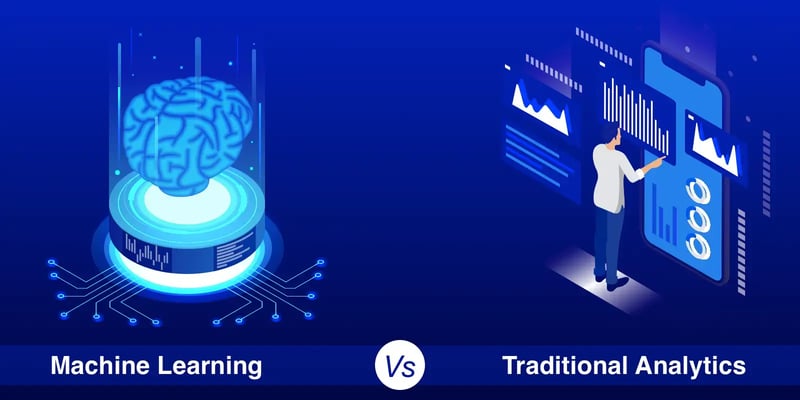
Fundamentally, both machine learning and traditional analytics use data to support decisions. But they go about it in very different ways.
Traditional analytics looks at past data to describe what happened. With that, you can easily spot trends and patterns using fixed rules. If you give it a clear question, it will give you a direct answer, which is mostly based on historical data. However, this works well when the data is clean and the problem is simple.
On the other hand, machine learning goes a step further. It does not need fixed rules that you should give. Instead, it learns from data on its own with the help of intelligent data analytics. It finds patterns that are too complex for manual analysis. Once it learns from data, it can make predictions or decisions without you having to tell exactly what to do. This makes it useful for problems that are complex and dynamic.
Let us understand it with an example - customer behavior. With traditional analytics, you might see how many people bought a product last month. But with machine learning, you can predict who is likely to buy next month, based on their actions and habits. It goes beyond explaining what happened and helps you predict future actions and target campaigns.
A key difference between traditional analytics and machine learning is how both approaches handle large and unstructured data.
Usually speaking, traditional analytics usually works best with small and organized datasets. And, machine learning is capable of handling huge volumes of data from different sources. It keeps on learning as new data comes in. This helps systems get better over time without needing to be reprogrammed.
Machine learning is also better at finding hidden patterns. In fields like fraud detection or demand forecasting, the patterns change often and are highly dynamic. In such an environment, machine learning keeps up with these changes way better than static, rule-based models. It adjusts and improves automatically without manually updating the logic every time.
What is Machine Learning as a Service (MLaaS)
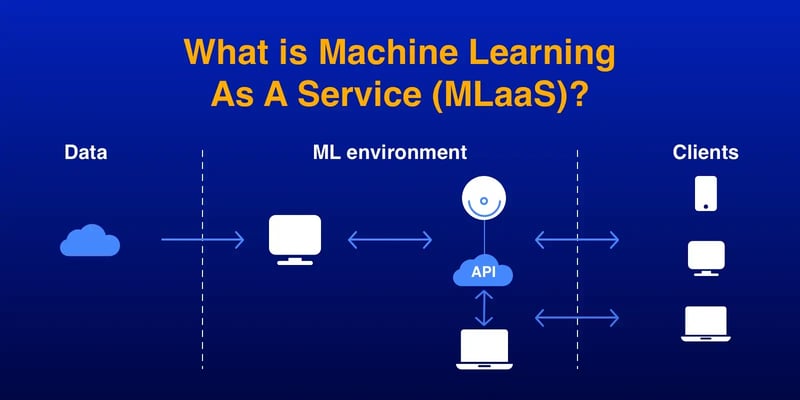
Machine Learning as a Service, or MLaaS, is a ready-to-use solution that makes it easier to adopt machine learning in your workflow. With MLaaS, you can use ML tools and platforms from cloud platforms instead of building everything from scratch.
MLaaS gives you easy access to pre-trained machine learning models ready to be deployed and integrated into your existing systems. The tools are hosted in the cloud, which means you do not have to set up your own infrastructure.
MLaaS works like any other cloud-based service, where you sign up, upload your data, and start building machine learning models using built-in tools. This eases you from managing servers or setting up complex pipelines.
One of the main reasons businesses choose MLaaS is the convenience it brings. It cuts down the time it takes to go from an idea to a working machine learning solution. With this, you can easily scale resources up or down as per your needs. You also pay only for what you use, which gives you a flexible and budget-friendly choice.
Benefits of MLaaS
- Cost-effective: You avoid the high upfront costs of building your own infrastructure and hiring a large team.
- Scalable: It handles growth easily. You can train models on larger datasets as your needs increase.
- Faster deployment: You can move from data to production in less time, using built-in tools and templates.
When to Consider MLaaS vs. Building In-House
To choose between MLaaS and building your own system, you need to be clear of your goals, budget, and team. MLaaS is a good fit if you want to test ideas quickly or if you do not have a large data science team. It is also useful for companies that need to scale fast without having to invest too much upfront.
On the other hand, building ML models in-house gives you full control, but the only consideration is that it takes time and resources. Building in-house is a better choice if your use case needs very customized models or tight integration with internal systems.
To Sum Up
Machine learning essentially changes the way how businesses make decisions and solve complex problems. With this, you can work smarter by using data in new ways. It does not matter what kind of business you do or the industry you operate in, it adds real value and helps you drive growth backed by data.
If you are exploring how machine learning can fit into your business, what’s better time to explore than now? You do not need a large team or a big investment to take the first step.
A quick consultation with our ML experts can help you spot real use cases and build a unique plan that works well for you. Reach out to explore how our machine learning services can help you move forward with clarity and confidence.

